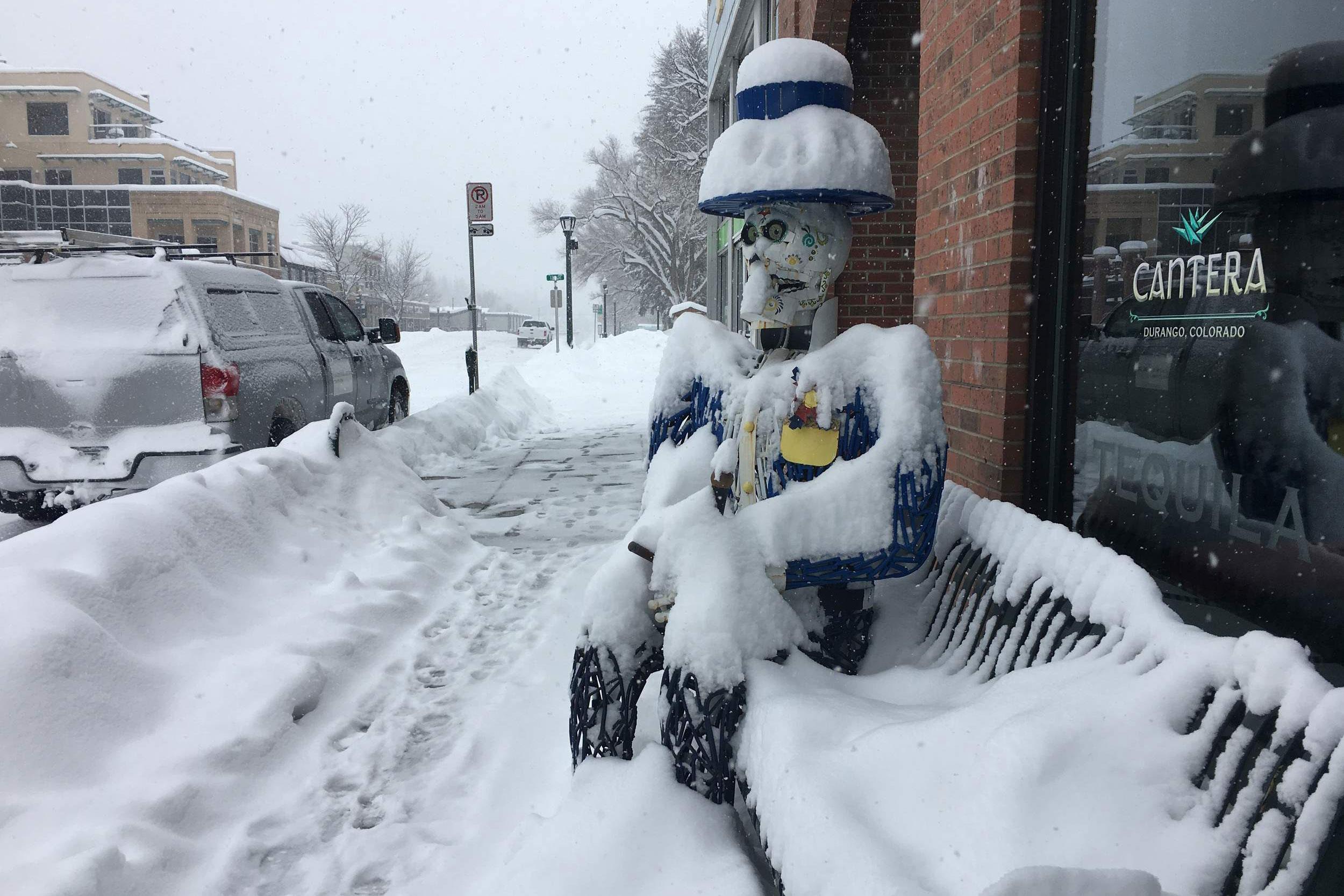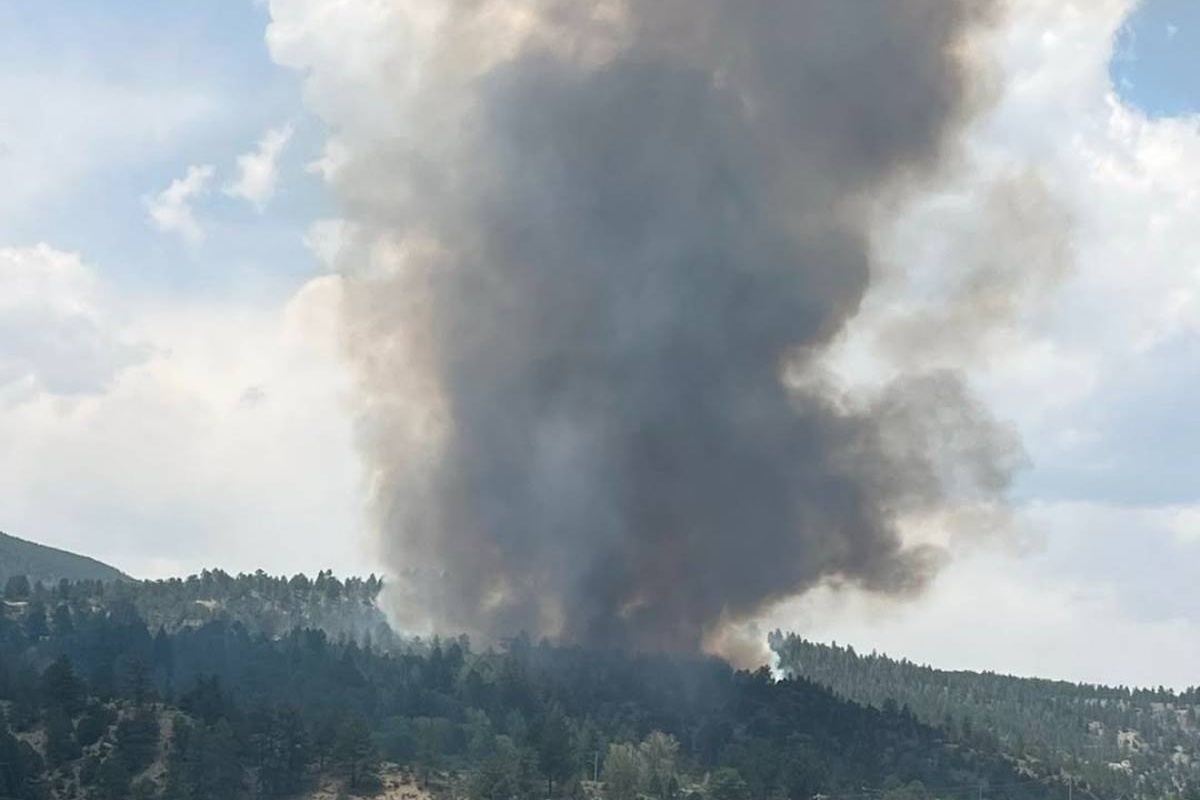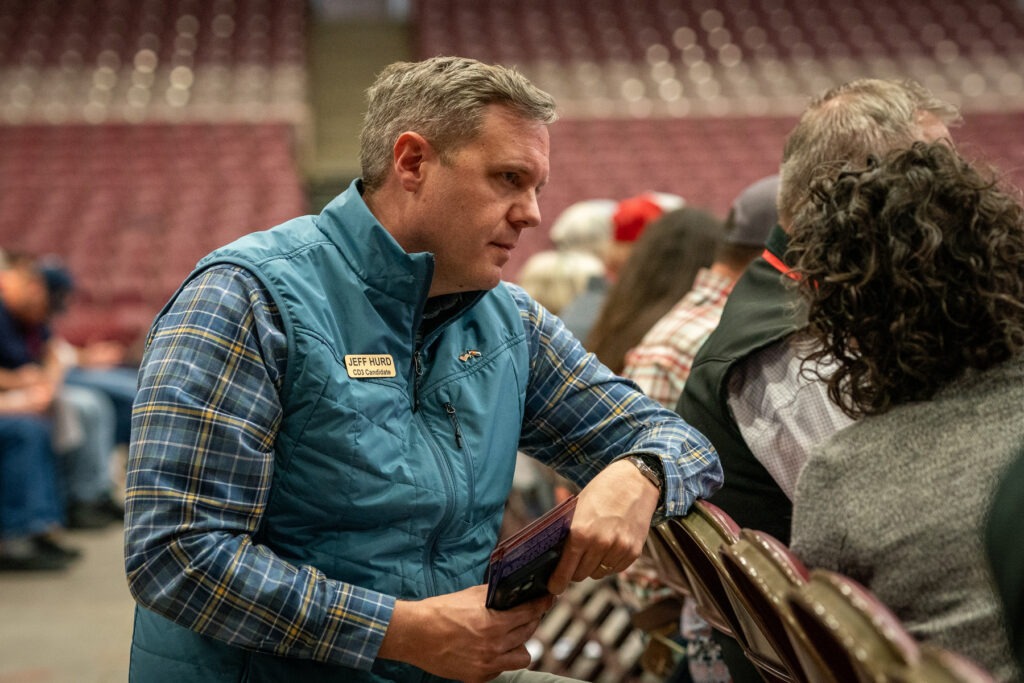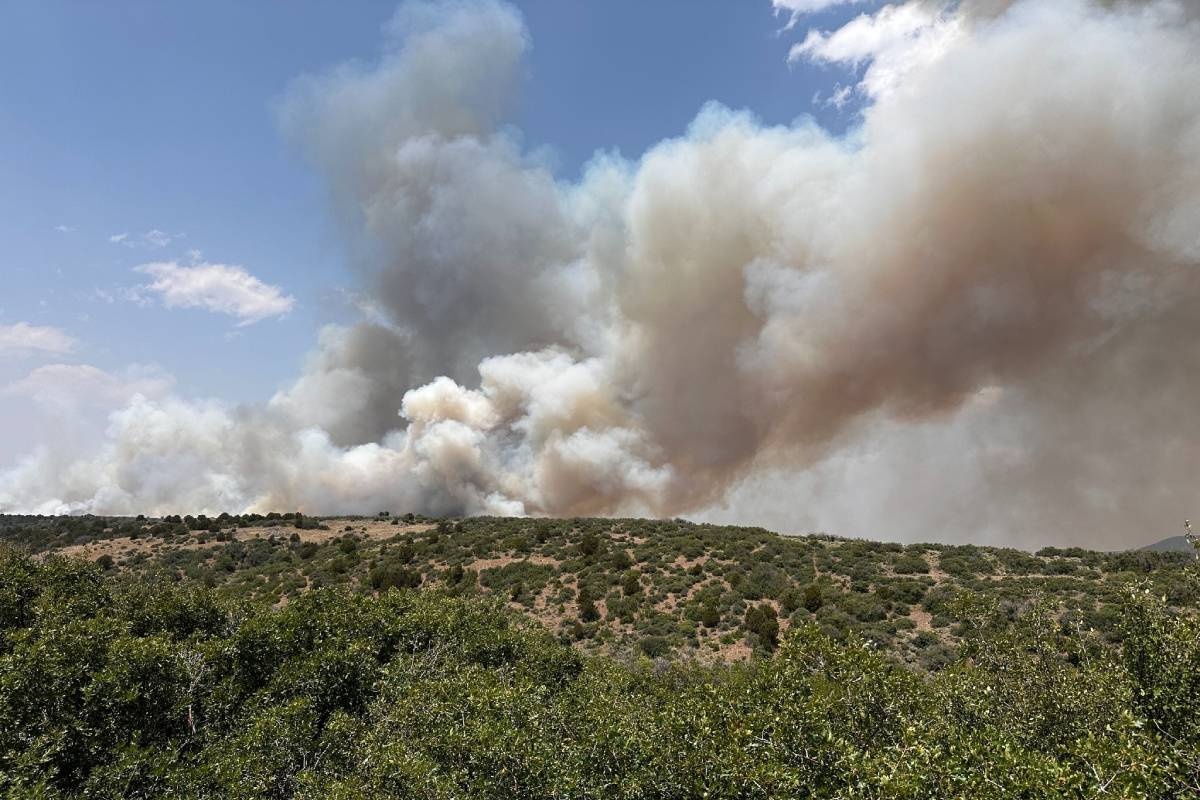

Amber Blake has one burning question this week as an assistant city manager in Durango.
And that is where to put all the snow.
As the drifts pile up around parking meters and crowd out cars, workers need to find new places to store it all. On downtown streets, workers have started to pile snow between oncoming lanes of traffic.
“In certain areas, the snow is almost as tall as a small adult,” Blake said.
What a difference a year makes. In 2018, hot and dry conditions fueled the 416 Wildfire that destroyed homes and slowed down tourism. Farmers and ranchers sold cattle and lost crops to the drought. This week the U.S. Drought Monitor map upgraded conditions for Montezuma, La Plata and other southwestern counties.

Assistant state climatologist Becky Bolinger calls conditions, “a stark difference from what we saw last year.”
The San Juan Mountains saw one inch more of precipitation compared to average for February 2019. Snowpack is well above average in the region. But there’s still cause for concern. Soils beneath the snow are still bone dry from drought. That means spring runoff will first seep into the soil. There could be less runoff water available to fill up the reservoirs.
And after a severe 2018 drought, thirsty reservoirs need water. The largest in the region, McPhee, is just 7 percent full.
“The check is in the mail. But we haven’t put it in the bank account yet,” Bolinger said.
Despite the lag in water storage, the picture feels more hopeful for agricultural producers like Brian Wilson, who grows hay in Montezuma County. In 2018 he grew about 3 tons, down from about 4 tons in an average year.
“Production was down, but the price [of hay] was better so the bottom line was about the same,” Wilson said.

Dryland farmers had it worse in 2018. With little moisture from the sky, many crops died. Willson hasn’t submitted seed and fertilizer orders yet for spring planting. Right now he’s feeling optimistic. But he won’t have a full picture of what water he can use until well after he’s planted his fields.
Still, the extra moisture in the soil will mean better grazing for rancher Matt Isgar’s cattle. He has a different problem as he looks to recover from last year’s disappointing season. A more productive 2019 will mean he’ll need more workers.
“It’s kind of hard after drought year. You typically don’t have all the same help you had because they didn’t work as much on a drought year,” Isgar said. “So now you have to get it geared backed up and try to get help back on track.”
Around town in Durango, Blake has her eyes on another logistics problem. She said the city’s nearly run through the $47,000 budgeted for snow removal this year. Blake says the city will a have to ask the Durango Council to approve more money for additional snow removal.
“We’ll do what we can to get that snow hauled away,” Blake said. “But it’s winter, and as my kid said, ‘Mom, you know, everybody just needs to learn how to love the snow.’”









